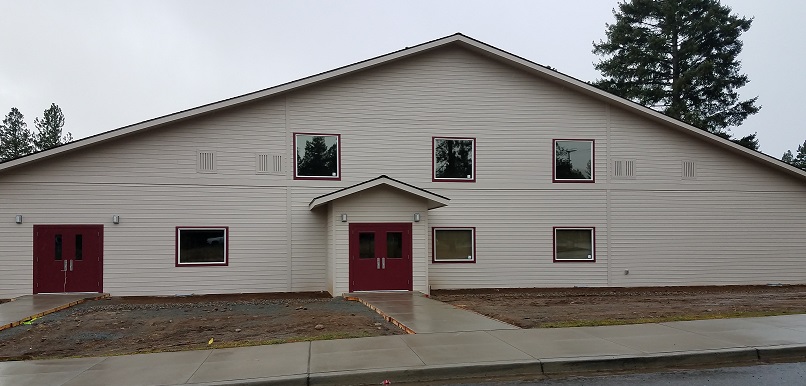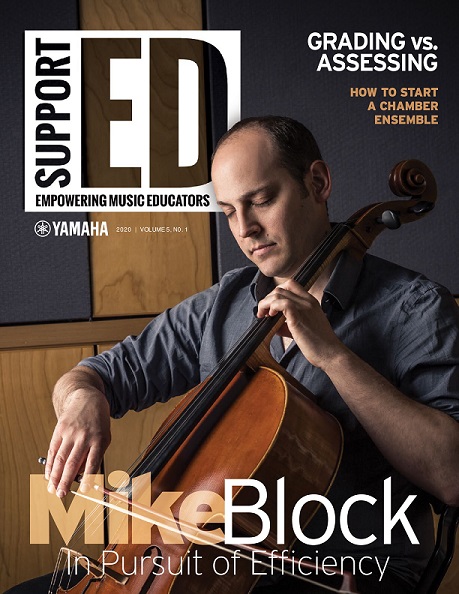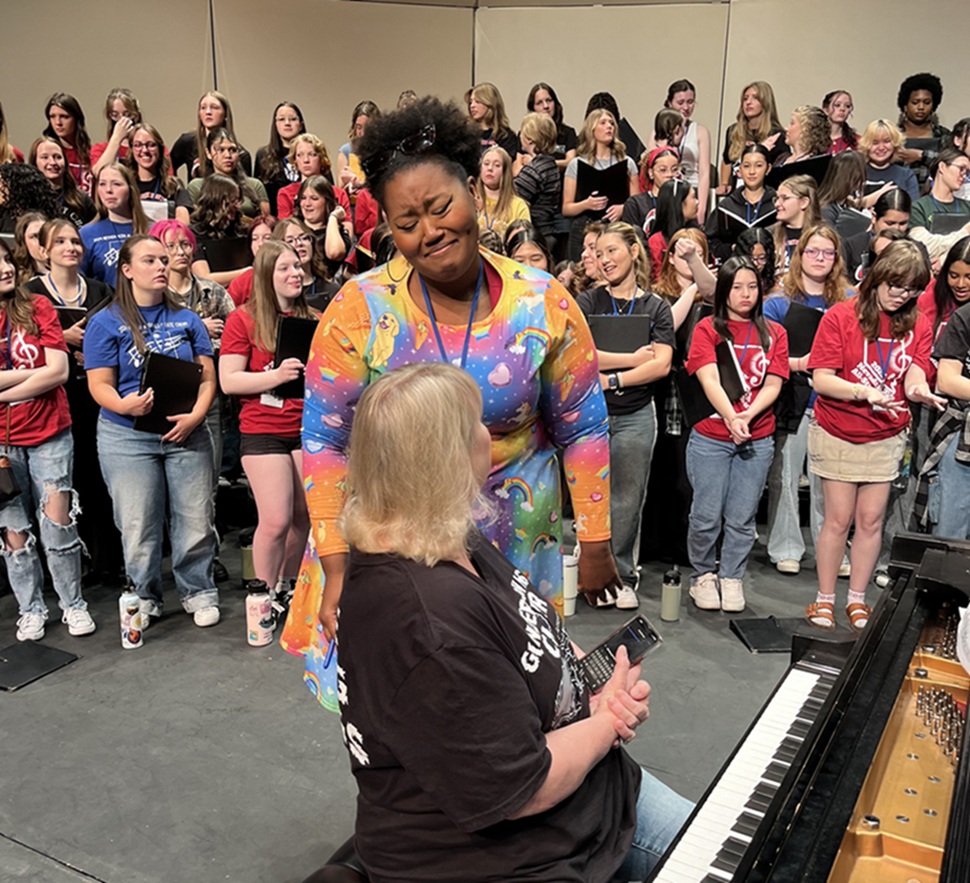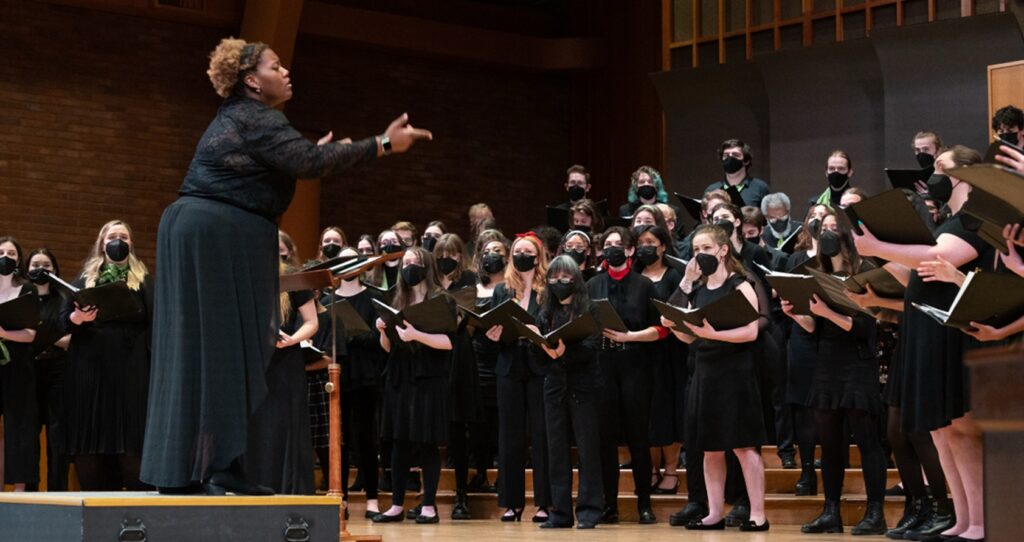Tagged Under:
Case Study: Cle Elum-Roslyn is a Small District with a Big Sound
School size doesn’t restrict the musical accomplishments at the Cle Elum-Roslyn School District.
Cle Elum, Washington, is a small town with a population of about 2,000 and a school district serving approximately 900 students in K-12 — but that doesn’t stop the power of music flowing through it.
If anything, the town’s size has helped people form closer connections through music. “Our community is really tightknit,” says Nick Maupoux, music director for Walter Strom Middle School and Cle Elum-Roslyn High School.
The community’s closeness has helped Maupoux with everything from securing grants for the music program’s growth to finding an audience for student performances. “In Cle Elum, there are a lot of awesome organizations looking to help the school out,” he says. “[And] in a small town, people just go to more events, I feel.”
Since his hiring in 2014, Maupoux has added music as a mandatory part of the sixth-grade curriculum, revived the choir program and high school marching band, and moved the band from a one-room setup to a new music building.
Starting with Sixth Grade
Before Maupoux, the district required music only through fifth grade. Maupoux worked to add an introductory band class into the schedule for all sixth-grade students in their first semester. Afterward, students can choose to stick with band or sign up for a different elective.
Maupoux collaborates with Ted Brown Music, which has six stores in Washington, to host an instrument petting zoo each spring. At the event, incoming sixth graders try out instruments and can also sign a rental agreement with Ted Brown.
For “parents who cannot afford to rent, … we will provide [an instrument],” says Lara Gregorich-Bennett, the middle school principal, who is also a band parent.
Raising funds to have an instrument for every student has taken some effort on Maupoux’s part. “I’ve been doing a lot of grant writing since I’ve been here,” he says.
During the past few years, Maupoux has received about $18,000 in grants from local businesses to provide instruments for students.
Maupoux has seen an enthusiastic response from both parents and students who are grateful to try an activity that they may have otherwise overlooked. “We have kids whose parents are like, ‘Wow! I had no idea they were going to like this,’” Maupoux says.
A New Home for Music
Just a few years ago, the music program was busting at its seams, occupying one middle school classroom packed tight with chairs that spilled into the hallway. “The community saw that we were outgrowing our current situation,” Maupoux says.
When Cle Elum received levy funds, many members of the community prioritized a new music building. Band parents attended school board meetings to testify about the music program’s importance.
“I would go to the school board and say, ‘Can I have two of the kids that just went to state come to the board meeting and play something for you?’” says Susan Bronkhorst, a member of the committee that hired Maupoux.
At that time, the band’s drum major was also a student representative on the school board. “She was always bringing to light the fact that she was a good student going to college, and music needed to be kept at the forefront of everyone’s mind,” Bronkhorst says.
Now a dedicated music building sits between the middle school and high school. In use since 2017, the building features high ceilings, a band room with a permanent jazz setup, a choir room with risers and a piano, three practice rooms, an instrument storage room with lockers and an office with a music library.
Marching into Competition
As a former member of the Oregon Crusaders Drum and Bugle Corps, Maupoux also revived the school’s competitive marching band, which had not been active since the 1990s.
Maupoux’s “number-one goal was to get a marching band going,” Gregorich-Bennett says. “He started, step by step, implementing different things and taking it to the next level.”
First Maupoux introduced a pep band and then slowly added drill, a color guard and other elements. “In 2014, we did just one song and some drill,” Maupoux says.
Then in 2015, the band performed in its first exhibition, and by 2016, the band was competing throughout the Washington Tri-Cities area. “Now we’re doing competitive field shows and getting trophies,” Maupoux adds.
The marching band claimed Best General Effect, Best Brass and Woodwinds, and first place in Division A at the 2019 Southeastern Washington Cavalcade of Bands as well as Best Music, Best Percussion and first place in the A Division of the 2019 Pacific Northwest Marching Band Championships.
College Connections
Although the marching band has only 24 students, running it takes a big team. Maupoux has developed a partnership with Central Washington University (CWU), his alma mater.
“I honestly couldn’t do it without the help of our [CWU] music education students,” Maupoux says. “I bring out one person per section. We have a band of 24 but have a staff of nine or 10. … The college students can practice teaching, and my kids can get more information.”
Working with CWU students also exposes high schoolers to college-level music performances. “There are concerts at Central, and it’s great to have them so close that we can attend,” says Lisa Hegg, a band parent. “My daughter wants to continue at Central after she graduates.”
Seeing those programs has motivated students to practice harder. Gregorich-Bennett recalls a conversation between Maupoux and a student last year. “One of the kids asked, ‘How did they get so good at this?’ Nick replied, ‘They practiced.’ Then the student said, ‘That’s it?’”
Gregorich-Bennett adds, “They see what other people … are able to do. That’s the point Nick stresses with the students. We can be that good; you’ve [just] got to practice.”
Community Performances
While Cle Elum’s strength doesn’t come in numbers, it does come from tightknit community bonds. “Every performance we have is in the newspaper,” Maupoux says. “The local TV station comes out and records our concert, and we can get a DVD.”
Students in the Cle Elum-Roslyn band want to perform every chance they get. Maupoux regularly organizes student performances for the school board where he hands out invitations to future shows. The music program hosts quarterly concerts as well as community performances for Halloween parades, holiday caroling and graduation, but some students hunger for more. “I had two middle school saxophone players … ask if they could play in front of a grocery store,” Maupoux says. “People started giving them money. They made it a donation to the band program.”
For all of his ensembles, Maupoux emphasizes quality over quantity. “We focus on creating the best sounds we can,” he says. “Focusing on tone quality, balance, articulation — all those details — is what makes music good.”
 This article originally appeared in the 2020N1 issue of Yamaha SupportED. To see more back issues, find out about Yamaha resources for music educators, or sign up to be notified when the next issue is available, click here.
This article originally appeared in the 2020N1 issue of Yamaha SupportED. To see more back issues, find out about Yamaha resources for music educators, or sign up to be notified when the next issue is available, click here.















